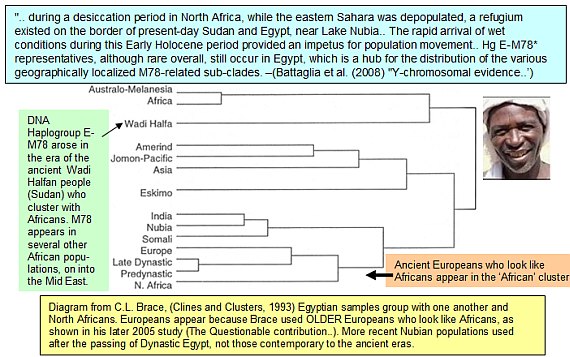|
Link to research papers and articles: (http://wysinger.homestead.com/keita.html) |
|
Link to current African DNA research: (http://exploring-africa.blogspot.com/) |
|
Google Search- other data
Home page |
Home | Quotations | Misc Notes | Notes 2 | Hair | DemicDiff | Diversity | DNA| Asian IQ | Keita2008 data | Blood | Debunk3
Egypt
in Africa |
Black-Greek-DNA links | Notes
3 |Notes
4| Notes
5 | Notes
6 |
Notes 7 | Misc
news clips | Ethiopians
| Nubians
|
African Tmeline| Mesopotamia
| Egypt-
A Tropical Civ || KnolArchiv |
Notes8|
Notes
9 | Notes
10 | Notes
11
|
Link to research papers and articles: (http://wysinger.homestead.com/keita.html) |
|
Link to current African DNA research: (http://exploring-africa.blogspot.com/) |
|
Google Search- other data
Home page |
Misc info
debunking Aryanist claims that African peoples look different fundamentally due to outside "race mixes"
"medi-centric" claims
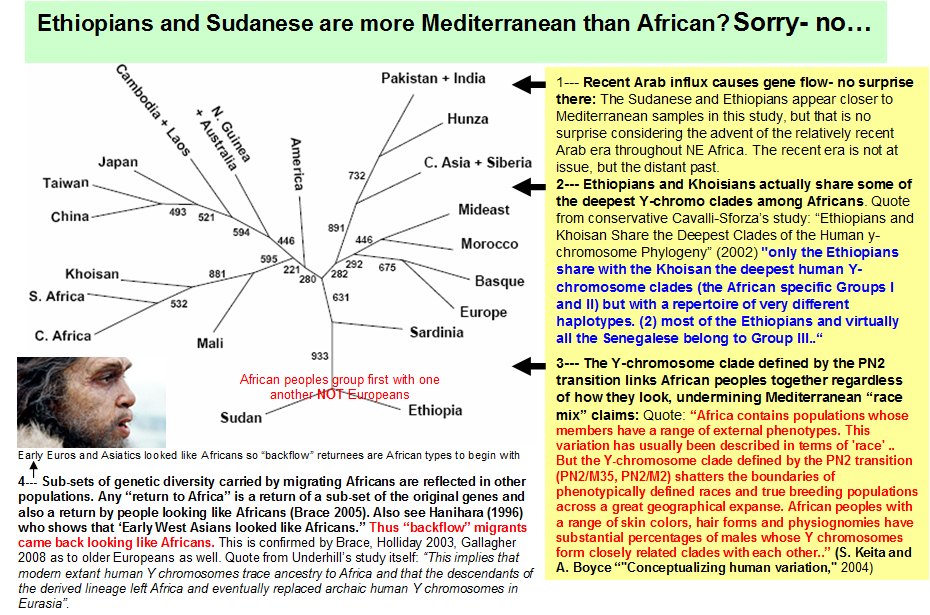
dna claims
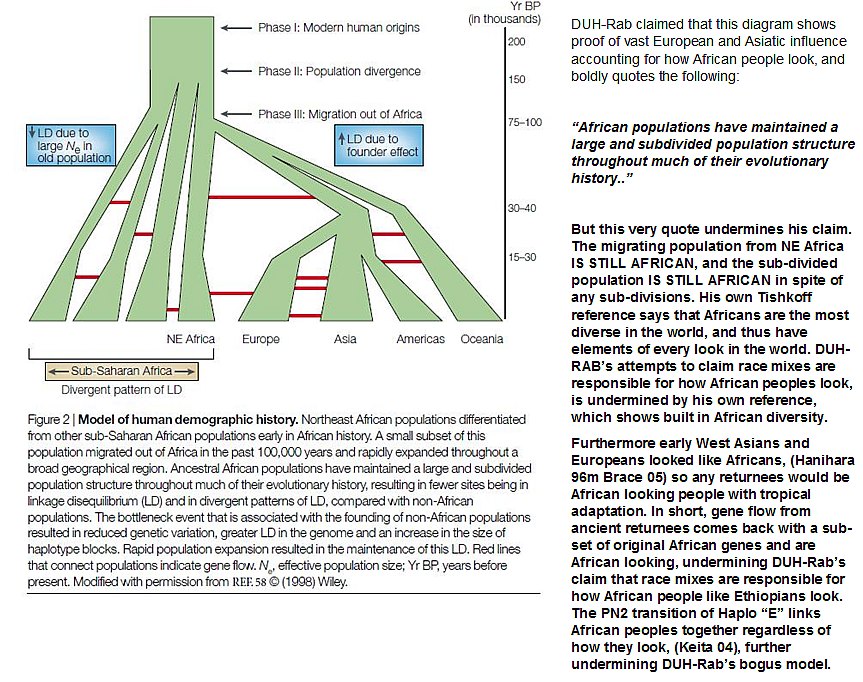
grouping claims
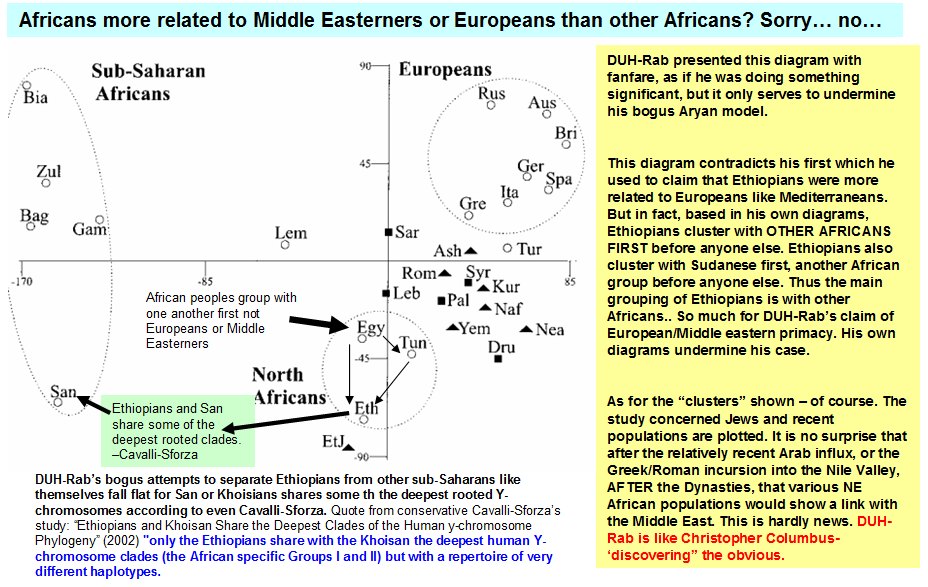
Early West Asians looked like Africans
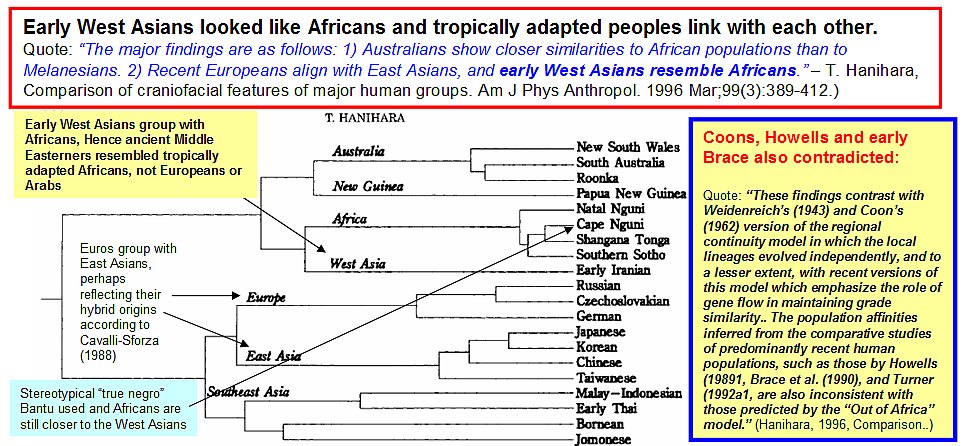
Ethiopian DNA

African DNA traces in Iberia
Mitochondrial DNA Affinities at the Atlantic Fringe of Europe [Ana M.
Gonza´ lez,1* Antonio Brehm,2 Jose´ A. Pe´ rez,1 Nicole Maca-Meyer,1 Carlos
Flores,1
and Vicente M. Cabrera1
1Departamento de Gene´tica, Universidad de La Laguna, 38271 La Laguna,
Tenerife, Spain
2Human Genetics Laboratory, Center of Macaronesian Studies, University of
Madeira, 9000]:
An important gene flow from Africa was detected in the Atlantic Iberia. Specific sub-Saharan lineages appeared mainly restricted to southern Portugal, and could be attributed to historic Black slave trade in the area and to a probable Saharan Neolithic influence. In fact, U6 haplotypes of specific North African origin have only been detected in the Iberian peninsula northwards from central Portugal. Based on this peculiar distribution and the high diversity pi value (0.014 +/- 0.001) in this area compared to North Africa (0.006 +/- 0.001), we reject the proposal that only historic events such as the Moslem occupation are the main cause of this gene flow, and instead propose a pre-Neolithic origin for it.
The haplogroup frequencies and sample sizes for the populations analyzed are given in Table 1. The haplotype with the reference sequence (CRS, Anderson et al., 1981) is the most abundant haplotype in all samples, although values range from 11.7% in northwest Africa to 21.7% in north Portugal.
As expected, sub-Saharan African influence, represented by baplotypes classified in L and Ml clusters, is important in northwest Africa (26.1%) but negligible in Europe, with the exception of south Portugal (11.7%).
The differential geographic distributions of these sub-Saharan African and northwest African haplogroups in the Iberian Peninsula are statistically significant: L and Ml clusters are more abundant in south Portugal (x = 9.81; P < 0.01), and U6 in northern areas (x = 5.83; P < 0.05).
With respect to northwest Africa, the geographically localized distribution of
matches and haplotypes of sub-Saharan African and northwest African origin in
the Iberian Peninsula is noteworthy. This distribution cannot be totally
explained by a historic genetic influence from the Moslem occupation (Pereira
et. al., 2000). During that time, the haplotype composition of northwest Africa
had to be similar to that of the present, and for this reason, sub-Saharan
African L and northwest African U6 haplotypes should be uniformly distributed in
the Iberian peninsula.
However, with respect to the sub-Saharan Africa lineages, the recent history of the Black slave trade carried out by the Portuguese (mainly in the 15th and 16th centuries), with a well-documented import in southern Portugal (Godinho, 1983), could also be a plausible alternative to explain the presence of these African haplotypes in this region. (Pereira et al 2000) To test this possibility we compared the proportion of sub-Saharan Africa haplotype matches between the Iberian Peninsula and northwest Africa (0.75%) with those of the Iberian Peninsula and a sample of sub-Saharan Africans from the Gulf of Guinea.
These results suggest that, although both prehistoric and historical influences likely contributed to the sub-Saharan African haplotype pool present in the Iberian peninsula, the former seems to be more important.
---------------

Am J Hematol. 2005 Sep;80(1):79-80.
Evidence for the molecular heterogeneity of sickle cell anemia chromosomes bearing the beta(S)/Benin haplotype.
Patrinos GP, Samperi P, Lo Nigro L, Kollia P, Schiliro G, Papadakis MN.
There are at least four distinct African and one Asian chromosomal backgrounds (haplotypes) on which the sickle cell mutation has arisen. Additionally, previous data suggest that the beta(S)/Bantu haplotype is heterogeneous at the molecular level. Here, we report the presence of the (A)gamma -499 T-->A variation in sickle cell anemia chromosomes of Sicilian and North African origin bearing the beta(S)/Benin haplotype. Being absent from North American beta(S)/Benin chromosomes, which were studied previously, this variation is indicative for the molecular heterogeneity of the beta(S)/Benin haplotype. Am. J. Hematol. 80:79-80, 2005.

E-M78 DNA haplogroup